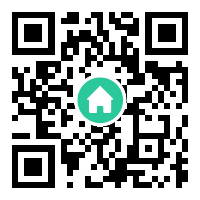Telegram sticker bots have revolutionized the way users express themselves in digital conversations. These bots, integrated seamlessly into the Telegram messaging platform, allow users to create, manage, and share custom sticker packs with ease. Whether for personal use, community engagement, or brand promotion, Telegram sticker bots empower individuals and organizations to add a layer of creativity and personality to their interactions. This article explores the functionality, benefits, and growing cultural impact of these bots, shedding light on why they’ve become a staple in modern communication.
What Are Telegram Sticker Bots?
Telegram sticker bots are automated tools designed to simplify the creation and distribution of custom stickers. Unlike traditional emojis or static images, stickers on Telegram are dynamic, colorful, and often animated, making conversations more engaging. Bots like @Stickers or @StickerMakerBot guide users through the process of uploading artwork, cropping images, and assigning emoji triggers. Once a sticker pack is finalized, it can be shared publicly or privately, allowing others to add it to their own Telegram libraries. This democratization of sticker creation has turned everyday users into digital artists and fueled a thriving ecosystem of niche sticker communities.
How to Create Your Own Sticker Pack
Creating a custom sticker pack with a Telegram sticker bot is a straightforward process. First, users interact with a bot like @Stickers via chat commands. The bot prompts them to upload images in PNG format with transparent backgrounds. For animated stickers, APNG or WebP formats are supported. After resizing and cropping each image to meet Telegram’s specifications (512x512 pixels), users assign emojis to their stickers for quick access. The bot then compiles these into a pack, generates a unique link, and publishes it. This accessibility has led to an explosion of themed packs—from memes and pop culture references to activism-focused designs—catering to diverse audiences worldwide.
The Role of Sticker Bots in Branding and Marketing
Beyond personal use, Telegram sticker bots have emerged as powerful tools for branding and marketing. Companies and influencers leverage custom sticker packs to strengthen brand identity and foster community engagement. For instance, a café might design stickers featuring its mascot, while a nonprofit could distribute stickers promoting social causes. These stickers act as mini-billboards within chats, offering subtle yet persistent visibility. Brands also collaborate with popular sticker creators to reach niche audiences, turning sticker packs into a form of viral marketing. The shareable nature of Telegram sticker bots amplifies this effect, as users organically spread branded content through their networks.
Challenges and Future Innovations
Despite their popularity, Telegram sticker bots face challenges such as copyright issues and oversaturation. Unauthorized use of copyrighted characters or logos remains a concern, prompting Telegram to implement reporting systems. Additionally, the sheer volume of sticker packs available can make discovery difficult for new creators. Looking ahead, advancements in AI could streamline sticker creation—imagine bots that auto-generate stickers from text prompts or personalize designs based on user preferences. Integration with augmented reality (AR) might also enable interactive 3D stickers, further blurring the line between digital communication and immersive experiences.
Conclusion: Stickers as a Universal Language
Telegram sticker bots have transformed stickers from mere embellishments to a universal language of digital expression. By lowering technical barriers, these bots empower anyone to contribute to Telegram’s vibrant visual culture. As the platform evolves, stickers will likely play an even greater role in shaping how we communicate online—bridging language gaps, sparking joy, and fostering connections in an increasingly fragmented digital world. Whether for humor, activism, or branding, Telegram sticker bots prove that sometimes, a picture truly is worth a thousand words.













